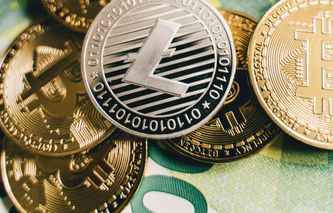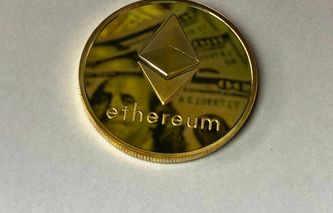With blockchain assets like Solana (SOL) playing a growing role in diversified investment strategies, understanding Solana price fluctuations is becoming essential for anyone navigating the digital asset landscape. As the adoption of crypto widens among retail and institutional investors, the pattern of behavior of SOL in the market gives one an understanding of the larger picture, threats and opportunities, and strategic planning that can be undertaken in personal finance management.
What Drives Solana’s Price Volatility?
The price of Solana is a function of a range of technological, market, and policy-related factors. In fact, as with SOL prices, investor confidence drives public relations, and news can affect PR sentiment in split seconds. The Solana network is no different. DeFi protocols, NFTs, and dApps are all constituents of the network, and the greater the utilization of the network, the greater the demand for SOL. Economically, this is healthy for the price trend.
Nevertheless, increased activity across a network is often of great concern. During February 2024, for example, network congestion temporarily slowed transactions and caused a sharp price drop. In addition, the same slow movement could be observed with institutional players who, after the EU’s Markets in Crypto-Assets (MiCA) regulation, opted to sit on the fence, waiting for more clarity before attempting to enter the market.
Solana Performance in 2024—An Analysis
Early in 2024, the price of Solana was about $85. By March 16, the price had increased to $204, and on November 22, the price registered a new all-time high of $264, surpassing the previous peak in late 2021. The price increase came from a plethora of developments within the network coupled with changes in the broader market.
As for the Solana Ecosystem, the Total Value Locked (TVL), which is one of the main metrics for measuring the level of activity in Decentralized Finance (DeFi), increased from approximately $1.8 billion in January to nearly $8.9 billion in November. Simultaneously, the volume of trading NFTs on Solana's platform increased more than eight times compared to its low value in 2023. This growth was caused by a combination of renewing demand and the return of important projects within the Solana ecosystem.
Developer engagement saw impactful growth as well. In 2024, the network brought in 7,625 new developers, which is an 83% year-over-year growth, making it the first time after 2016 that Solana overtook Ethereum in terms of new developer adoption. The ecosystem’s momentum garnered significant attention from institutions. This was a signal of increasing faith in the blockchain's infrastructure and scalability.
Influences on Financial Planning
For both individual investors and financial planners, Solana's volatility creates a double-edged sword. Short-term traders may look to capitalize on price movements through the use of technical analysis and risk-managed frameworks. Meanwhile, long-term investors often use dollar-cost averaging, which reduces exposure to short-term price fluctuations by spreading out purchases over time.
Within diversified portfolios, Solana is an ideal small, high-risk but high-reward asset that usually nets 3-5% of an investor's cryptocurrency portfolio. Like all cryptocurrencies, Solana requires the user to do constant monitoring and rebalancing due to its volatile nature. Including Solana in your portfolio should be a calculated decision based on how comfortable you are with risk, liquidity, and your overall financial strategy.
Solana's Price Trends: A Review
Observing Solana’s price history educates one regarding its growth and volatility. With the rise of NFTs and DeFi, SOL reached an all-time high of $260 in November 2021. The following year was marked by a steep decline, with Solana’s price crashing to below $10 in December 2022, alongside the rest of the market. By December 2023, however, Solana was priced at roughly $100, and not even a year later reached $264 - a value higher than its all-time high.
Around March 2025, Solana traded at $132, which was expected after the prior years’ peaks. The decline is indicative of a natural correction and profit-taking. This serves as a reminder to be patient and build predictive plans for buying and selling digital assets.
Real-World Use Cases and Growth
Solana has certainly come a long way from being a speculatively priced retail cryptocurrency. In March 2025, European investors were able to trade Solana through the newly launched ETPs by 21Shares on Nasdaq Stockholm. This allowed for not only low-suspicion trading of crypto but also access to these assets in Europe. BlackRock and Securitize further expanded the BUIDL fund by issuing a new share class directly on Solana's blockchain, showcasing Solana's use case for large-scale tokenized assets.
Apart from finance, Solana can be used in tangible asset digitization, including real estate and private equity, due to its low transaction cost and high throughput. These advancements not only prove Solana’s long-term value proposition but also add further complexity by introducing more volatility, as large institutional investments can profoundly impact these markets.
Navigating Solana Price Fluctuations
Managing risk with trading Solana is not that different than managing risk with traditional financial markets. Defining an investment scope, whether it is focused on growth, diversification, or from a short-term perspective, is important. Monitoring on-chain metrics such as TVL, transaction volume, and active developers can provide signals of when Solana is gaining or losing momentum.
OKX and other reliable data platforms offer detailed historical charts during the live analysis of the crypto Solana, which helps investors decide whether to invest or not. Most importantly, it is important to limit exposure to one asset, even if it is as great as Solana, and ensure that the portfolio allocated is in line with the overall investment strategy.
Conclusion
The swiftly changing prices of Solana indicate how competitive and innovative the cryptocurrency market is. An informed cryptocurrency trader can utilize these price fluctuations as an investment opportunity instead of a risk. This is due to Solana’s real-world utility, institutional validation, rapidly growing ecosystem, and its position as a player in the future of decentralized finance. If investors want to hedge their bets whilst being confident about including Solana with other cryptocurrencies in the portfolio, they will need to utilize effective decision-making strategies and planning tools.






